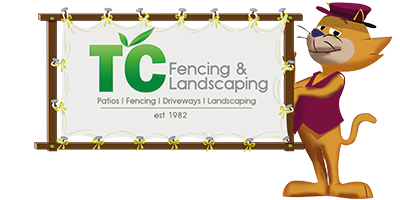The Art of Garden Design: Tips from Experts
In the world of landscaping, garden design stands as a proper art form. It's not just about arranging plants and hardscape elements; it's about creating captivating outdoor spaces that breathe life into your property. The art of garden design blends aesthetics, functionality, and harmony—a masterpiece waiting to be unveiled in your Staffordshire backyard.
Garden design is more than meets the eye. It's about transforming an ordinary yard into a space that reflects your personality, complements your home, and fosters an appreciation for nature. The artful arrangement of plants, hardscaping, and other features can turn any outdoor space into a haven of beauty and tranquillity.
In this blog post, we're delving into garden design, offering insights and tips from experienced TC Fencing and Landscaping landscapers. Our goal is simple: to equip you with the knowledge and inspiration needed to create your own piece of garden artistry.
Principles of Garden Design
Much like any art form, garden design adheres to fundamental principles that lay the foundation for breathtaking outdoor spaces. Let's explore these principles:
Balance: Balance is the cornerstone of a well-designed garden. It creates equilibrium by harmonising plants, hardscapes, and open spaces. Achieving balance ensures your garden is visually pleasing and feels clear and complete.
Focal Points: Just as a painting has a focal point, a garden should have a central element that draws the eye. This could be a striking sculpture, a water feature, or a majestic tree. Focal points add depth and interest to your garden.
Unity: Unity is the thread that weaves all elements of your garden together. It's about ensuring that everything in your garden works in harmony. Unity doesn't mean everything must be the same; it means that your design should have a sense of cohesion and purpose.
When our expert landscapers approach a garden design project, these principles are at the forefront of their minds. They understand that creating a garden isn't just about planting flowers; it's about orchestrating a symphony of nature.
Choosing the Right Plants
The plants you choose for your garden are pivotal in its overall charm. Here are some key considerations:
Selection: The first step is selecting the right plants. Consider your climate, soil type, and the sunlight your garden receives. Native plants are a fantastic choice, as they adapt to your local environment.
Staffordshire Natives: In Staffordshire, we're blessed with a diverse range of native plants. These species thrive in our soil and climate, from the vibrant Bluebell to the fragrant English Lavender. Incorporating native plants not only adds local character but also supports local wildlife.
Your choice of plants can transform your garden's atmosphere, whether you desire a cottage-style haven, a Mediterranean retreat, or a contemporary landscape.
Creating Functional Outdoor Spaces
Garden design isn't solely about aesthetics; it's also about practicality. Here's how you can create functional outdoor spaces:
Outdoor Living: Modern gardens often feature outdoor living spaces. Patios, decks, and pergolas are popular choices, providing relaxation, dining, and entertainment areas. Well-designed outdoor living spaces seamlessly blend with the natural surroundings.
Garden Functionality: Beyond aesthetics, your garden can serve a functional purpose. Incorporating pathways, raised beds, and dedicated play areas can enhance the utility of your outdoor space. Thoughtful design makes your garden not only beautiful but also practical.
Sustainable and Eco-Friendly Design
In today's world, sustainable garden design is gaining prominence. Consider these eco-friendly practices:
Sustainable Garden Design: Sustainable garden design prioritises resource conservation and environmental responsibility. Implement water-wise gardening, which reduces water consumption, and mulching, which conserves soil moisture.
Eco-Friendly Landscaping: Eco-friendly landscaping choices, such as permeable paving and native plantings, minimise environmental impact. They create landscapes that are both visually stunning and ecologically sound.
By embracing sustainable and eco-friendly design principles, you contribute to a healthier environment and enjoy a garden that's easier to maintain.
In conclusion, garden design is a captivating art that transforming outdoor spaces into beautiful sanctuaries. By understanding the principles of balance, focal points, and unity, you can create gardens that are indeed works of art.
Remember that plant selection, especially of native species, brings a local touch to your garden and supports local ecosystems. Functional outdoor spaces add practicality to your garden. At the same time, sustainable and eco-friendly design practices make your garden a responsible part of the environment.
At TC Fencing and Landscaping, we're passionate about garden design. Contact us today if you're ready to turn your outdoor space into a masterpiece. Let's work together to bring your garden dreams to life.




